Everything You Need to Know about Face Identification
Facial recognition technology is a biometric method to identify individuals by analyzing and comparing facial patterns. It relies on unique facial features such as the distance between the eyes, the nose’s shape, and the jawline’s contours. The process typically involves capturing an image or video of a person’s face, extracting facial features from the image, and then comparing these features against a database of known faces to find a match.
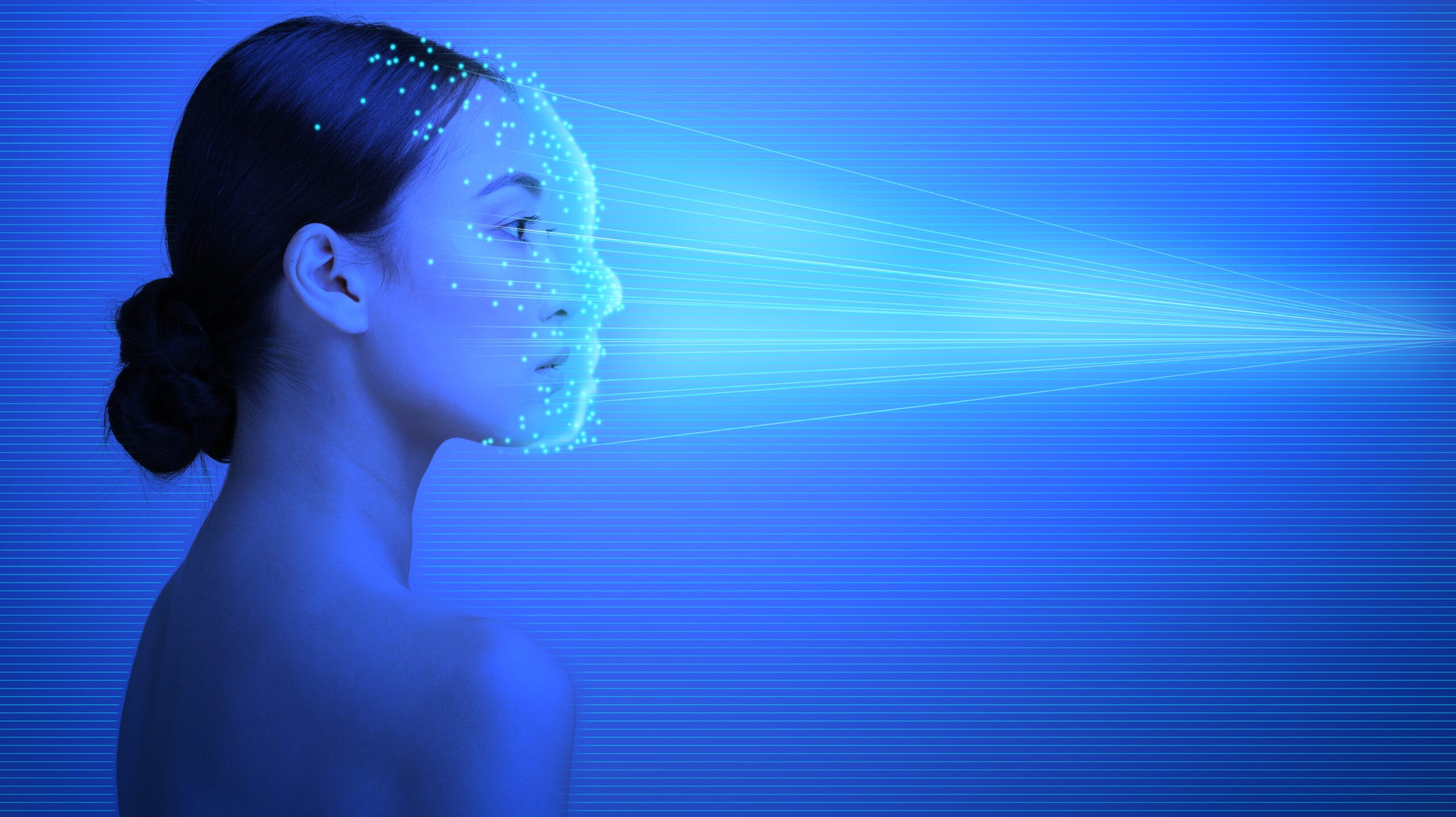
Evolution of Facial Recognition
Facial recognition technology has evolved significantly over the years. Early systems were limited by factors such as image quality and processing power, but advancements in computer vision algorithms and hardware have greatly improved accuracy and speed. One significant milestone was the development of deep learning algorithms, which have revolutionized the field by enabling computers to learn complex patterns directly from data.
Significance of Facial Recognition Technology in Modern Society
Facial recognition technology has become increasingly prevalent in modern society, with applications ranging from security and law enforcement to marketing and personal device authentication. In security and law enforcement, it is used for surveillance, access control, and identifying suspects in criminal investigations. It can be used in marketing to personalize advertisements and track customer demographics. Additionally, facial recognition is commonly used for authentication purposes, such as unlocking smartphones or verifying identity for online transactions.
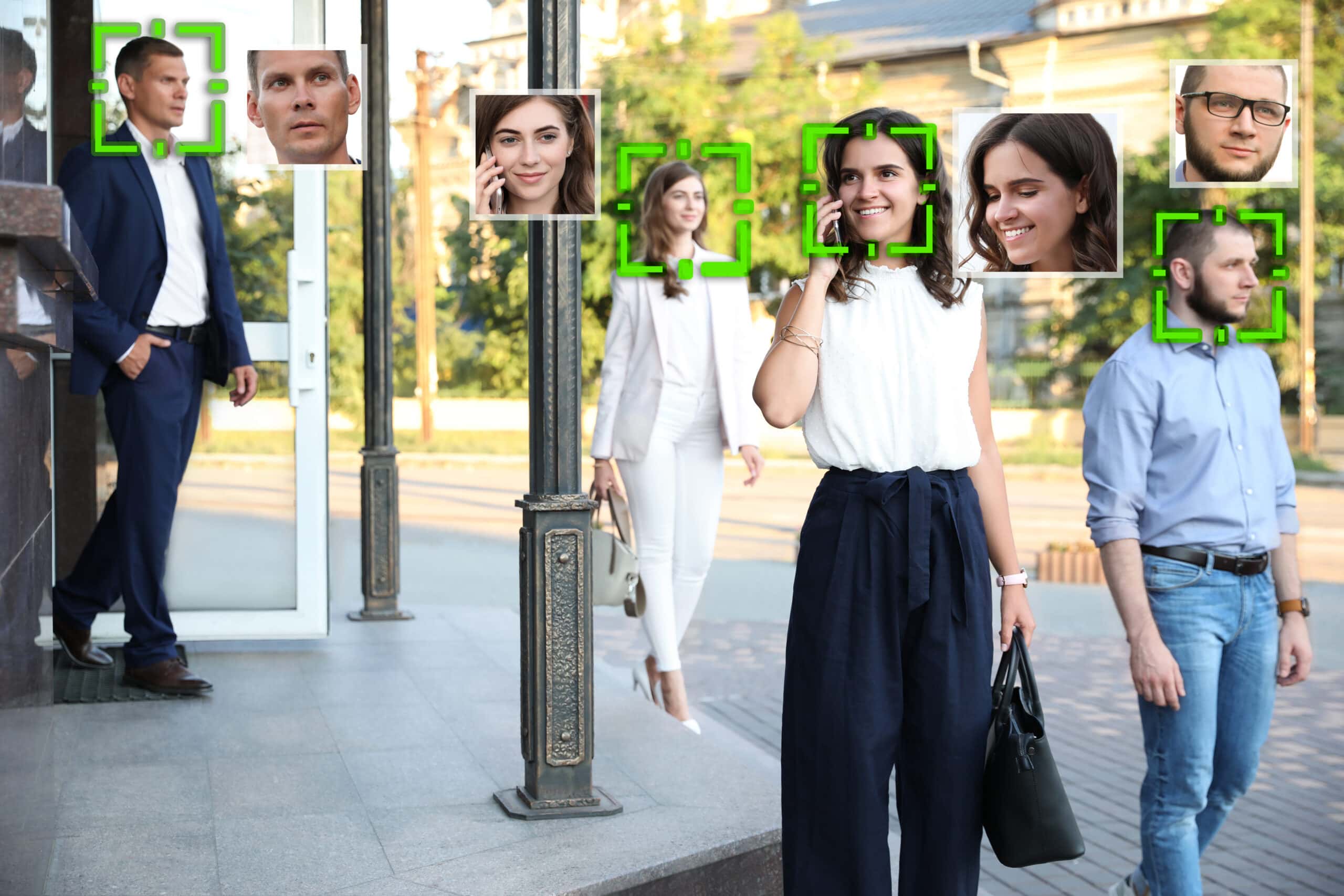
What Is Facial Recognition?
Facial recognition is a biometric technology that identifies or verifies individuals by analyzing and comparing unique facial patterns. This process involves capturing an image or video of a person’s face, extracting facial features, and then matching these features against a database of known faces.
Defining Facial Recognition
Facial recognition is a computerized method of identifying or verifying individuals based on facial characteristics. It utilizes algorithms to analyze facial features such as the distance between the eyes, the nose’s shape, and the jawline’s contours. By comparing these features with a database of stored faces, facial recognition systems can determine a person’s identity or verify their claimed identity.
Components and Mechanisms
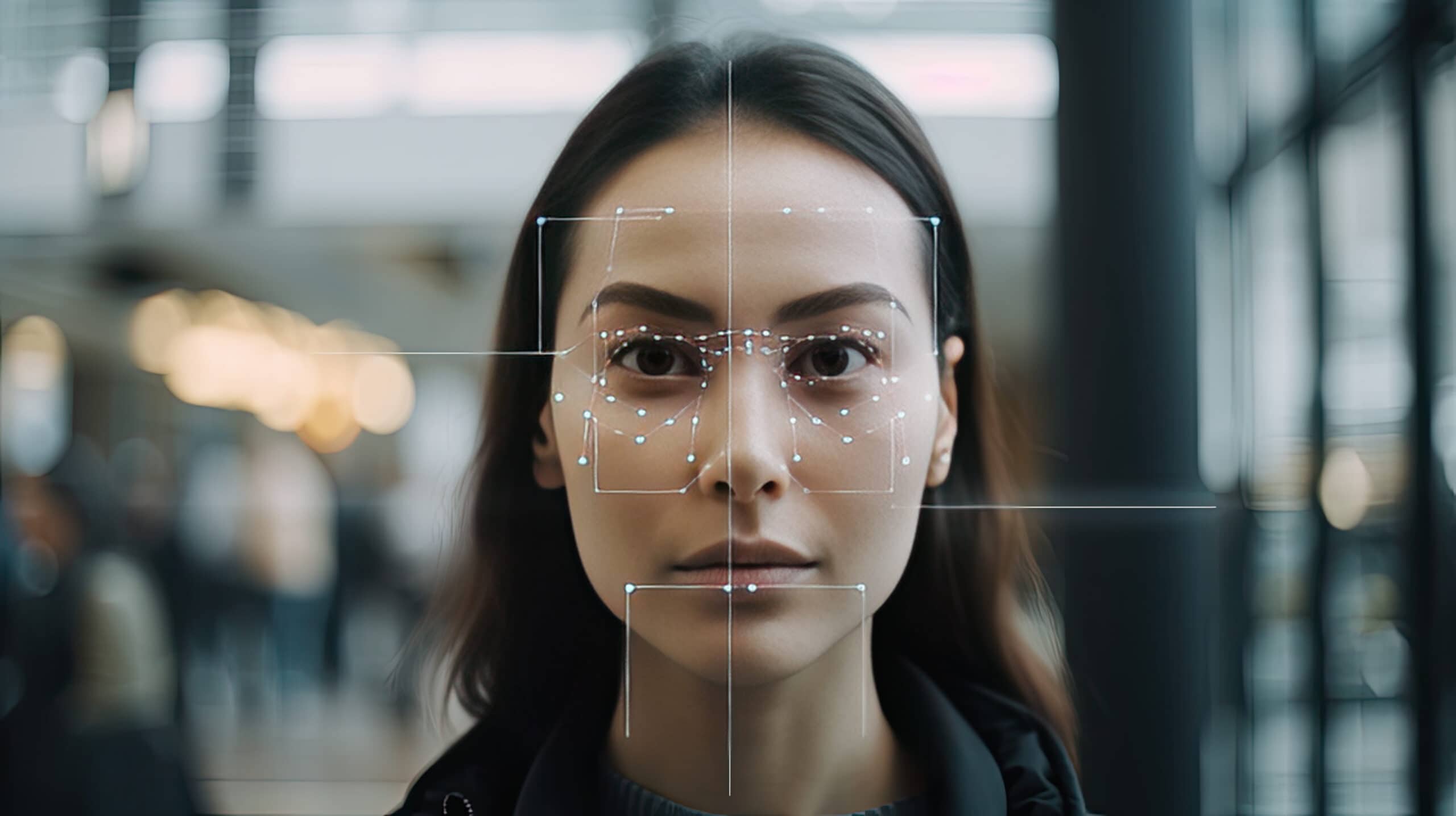
Face Detection
Face detection is the initial step in facial recognition, where the system locates and identifies faces within an image or video frame. This process involves algorithms that analyze the visual data to detect regions of the image that likely contain faces. Techniques such as the Viola-Jones algorithm and Convolutional Neural Networks (CNNs) are commonly used for face detection.
Face Identification
Face identification, also known as face recognition, is the process of matching detected faces against a database of known faces to determine the individual’s identity. This involves comparing the extracted facial features, such as the position of key landmarks and the arrangement of facial components, with the features of faces stored in the database. If a match is found, the system can identify the person.
Face Verification
Face verification is similar to face identification but involves verifying whether a detected face matches a specific identity claimed by the individual. Instead of searching through a database of known faces, face verification compares the features of the detected face with those of a single reference face associated with the claimed identity. If the features are sufficiently similar, the identity is verified.
Facial recognition systems employ a combination of these components and mechanisms to identify or verify individuals based on their facial characteristics accurately. These systems have applications in various fields, including security, law enforcement, access control, and personal device authentication. However, they also raise concerns about privacy, surveillance, and potential biases in algorithmic decision-making.
How Facial Recognition Works
Facial recognition technology operates through a series of steps involving capturing, analyzing, and comparing facial features to establish or verify identity. This process relies on sophisticated algorithms and database integration to achieve accurate results.
Overview of the Process
Facial recognition begins with capturing an image or video containing one or more faces. The system then analyzes the facial features within the image, extracting key characteristics such as the size and shape of the eyes, nose, mouth, and overall facial structure. These features are compared against a database of known faces to identify or verify the individual’s identity.
Key Components Explained
Feature Extraction
This component involves extracting distinctive facial features from the captured image or video. Algorithms analyze the image to identify key landmarks and measurements, such as the distance between the eyes or the curvature of the lips. These features are then represented as numerical vectors for comparison.
Matching Algorithms
Matching algorithms compare the extracted facial features against the features stored in the database. Various techniques may be used for comparison, including geometric methods, template matching, and machine learning algorithms such as neural networks. The goal is to find the closest match or matches within the database.
Database Integration
The facial recognition system relies on a database containing reference images and associated metadata for known individuals. This database may store additional information such as names, demographics, and other identifying attributes. Integration with the database allows the system to retrieve relevant information and make accurate identity determinations.
Technical Underpinnings
Feature Extraction
Feature extraction algorithms use edge detection, histogram analysis, and geometric modeling to identify and extract facial landmarks and measurements from the image data.
Matching Algorithms
Matching algorithms employ various mathematical and statistical methods to compare the extracted facial features. These methods may include distance metrics, similarity scores, and decision-making algorithms to determine the degree of similarity between faces.
Database Integration
Database integration involves linking the facial recognition system with a centralized or distributed database containing reference images and associated metadata. This integration enables efficient retrieval and comparison of facial data for identification or verification purposes.
Facial recognition technology relies on the seamless integration of these components and the underlying technical frameworks to achieve accurate and reliable results in various applications. However, concerns about privacy, security, and algorithmic biases underscore the importance of ethical considerations and safeguards in developing and deploying facial recognition systems.
Applications of Facial Recognition
Facial recognition technology finds diverse applications across various sectors, offering solutions for security, convenience, and personalized experiences.
- Security and Surveillance
- Access Control Systems: Facial recognition is employed in access control systems to regulate entry to secure areas. By verifying the identity of individuals based on their facial features, these systems enhance security by preventing unauthorized access.
- Law Enforcement: Law enforcement agencies use facial recognition technology to aid in criminal investigations and surveillance efforts. It enables the identification and tracking of suspects, missing persons, and persons of interest by analyzing surveillance footage or matching against databases of known individuals.
- Border Control: Facial recognition is utilized in border control and immigration processes for identity verification and monitoring. It helps border authorities identify travelers and detect individuals on watchlists or with fraudulent documents.
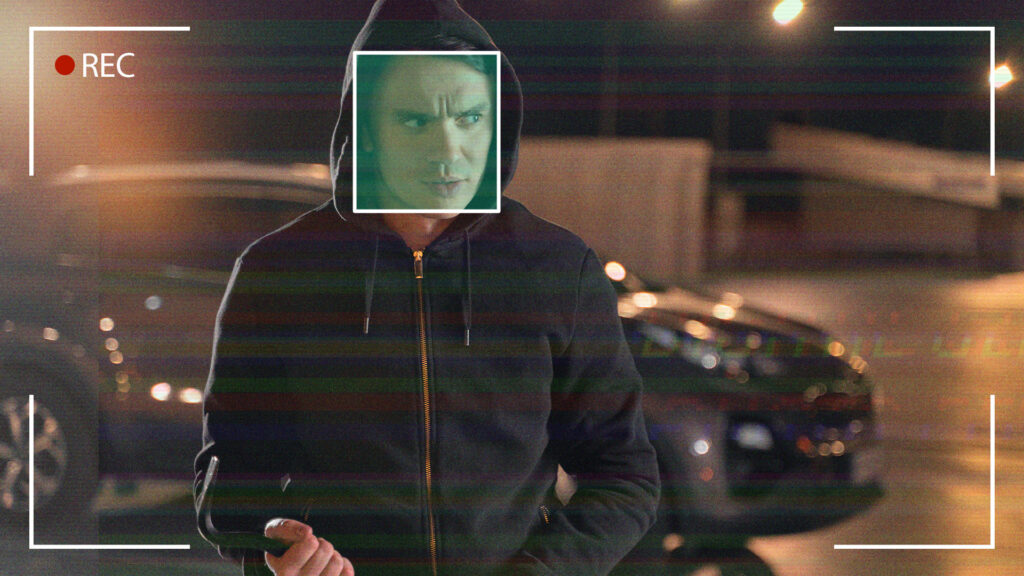

- Personal Devices and Authentication
- Smartphone Unlocking: Many modern smartphones incorporate facial recognition technology for biometric authentication, allowing users to unlock their devices simply by looking at them. This adds an extra layer of security and convenience compared to traditional methods such as PINs or passwords.
- Payment Verification: Facial recognition is increasingly used for payment verification in retail and banking applications. By linking facial biometrics to payment accounts, individuals can authorize transactions securely without needing physical cards or PINs.
- Marketing and Retail
- Customer Insights: Retailers and marketers utilize facial recognition technology to gather customer insights and enhance the shopping experience. By analyzing facial expressions and demographic data, businesses can understand customer behavior, preferences, and sentiments to tailor their offerings.
- Targeted Advertising: Facial recognition enables targeted advertising by identifying demographic characteristics and personalizing advertisements based on individual preferences and interests. This allows advertisers to deliver more relevant and engaging content to consumers, maximizing the effectiveness of marketing campaigns.

Facial recognition technology continues to evolve and expand its applications across various industries, offering benefits such as improved security, enhanced user experiences, and more efficient business operations. However, ethical considerations regarding privacy, consent, and potential misuse remain important factors in developing and deploying facial recognition systems.
Benefits and Advantages of Facial Recognition
Facial recognition technology offers a range of benefits across different domains, including security, convenience, user experience, and potential social impact.
Facial recognition enhances security measures by providing a robust and reliable means of identity verification. Compared to traditional methods such as passwords or ID cards, facial recognition offers a more secure authentication process, as facial features are unique to each individual and difficult to replicate or forge. This technology is widely used in access control systems, law enforcement, border control, and other security-sensitive applications to prevent unauthorized access and detect suspicious activities.
One of the key advantages of facial recognition is its convenience and efficiency. Facial recognition simplifies authentication processes and streamlines interactions by eliminating the need for physical tokens or manual input, such as keys, cards, or passwords. For example, users can unlock their smartphones, access secure facilities, or authorize transactions with just a glance, saving time and effort. This convenience enhances user experience and improves operational efficiency in various sectors like banking, retail, and transportation.
Facial recognition technology enhances user experience by providing seamless and intuitive interactions across applications and devices. By leveraging biometric authentication, facial recognition eliminates the need for users to remember complex passwords or carry multiple identification cards, resulting in a more user-friendly and frictionless experience. Moreover, facial recognition can personalize user interfaces and services based on individual preferences and behavior, enhancing user satisfaction and engagement.
Facial recognition holds the potential for social good by enabling innovative solutions to address various societal challenges. For example, it can aid in rapidly identifying and recovering missing persons, facilitate humanitarian efforts in disaster response and refugee assistance, and improve access to essential services such as healthcare and education. Additionally, facial recognition can support initiatives to enhance public safety, improve urban planning, and advance social inclusion and equality.
Facial recognition technology poses serious privacy concerns as it collects, stores, and analyzes individuals’ biometric data without explicit consent. There are concerns about the potential misuse or unauthorized access to this sensitive information, leading to breaches of privacy and the risk of identity theft or surveillance. Additionally, the widespread deployment of facial recognition systems in public spaces raises questions about individuals’ right to anonymity and freedom from constant monitoring.
The widespread adoption of facial recognition technology has sparked a debate about creating a surveillance state where governments and corporations have extensive capabilities to monitor and track individuals’ movements and activities. Critics argue that unchecked surveillance infringes upon civil liberties and undermines democratic principles, leading to a chilling effect on free speech and association. Moreover, the lack of transparency and accountability in surveillance practices exacerbates concerns about abuse of power and the potential misuse of facial recognition technology for political repression or social control.
Facial recognition systems have been shown to exhibit biases and inaccuracies, particularly in their performance across different demographic groups. These biases can result in disproportionate impacts on marginalized communities, including people of color, women, and individuals with non-conforming gender identities. Biased algorithms may lead to false identifications, discriminatory treatment, and exacerbation of societal inequalities. Moreover, the reliance on biased training data and subjective decision-making processes can perpetuate harmful stereotypes and reinforce systemic discrimination.
The rapid advancement and widespread deployment of facial recognition technology have outpaced the development of comprehensive regulatory frameworks to govern its use and protect individuals’ rights. Regulatory challenges include transparency, accountability, consent, and oversight of facial recognition systems. Policymakers face the difficult task of balancing the potential benefits of facial recognition with the need to safeguard privacy, civil liberties, and human rights. Effective regulation requires collaboration between government agencies, technology companies, civil society organizations, and other stakeholders to develop robust safeguards and accountability mechanisms.
Concerns and Ethical Implications
While facial recognition technology offers various benefits, it also raises significant concerns and ethical implications that must be carefully addressed to mitigate potential risks and safeguard individual rights and liberties.
Addressing concerns and ethical implications associated with facial recognition technology requires a multifaceted approach prioritizing privacy, transparency, accountability, and equity. Engaging in informed public discourse, conducting rigorous impact assessments, and establishing clear legal and ethical standards are essential to ensure responsible and ethical deployment of facial recognition technology in society.
Facial Recognition Software
Facial recognition software is pivotal in various industries, offering advanced facial biometrics identification, authentication, and analysis capabilities. Understanding the leading technologies, their features, and considerations for implementation is essential for selecting the most suitable solution for specific needs.
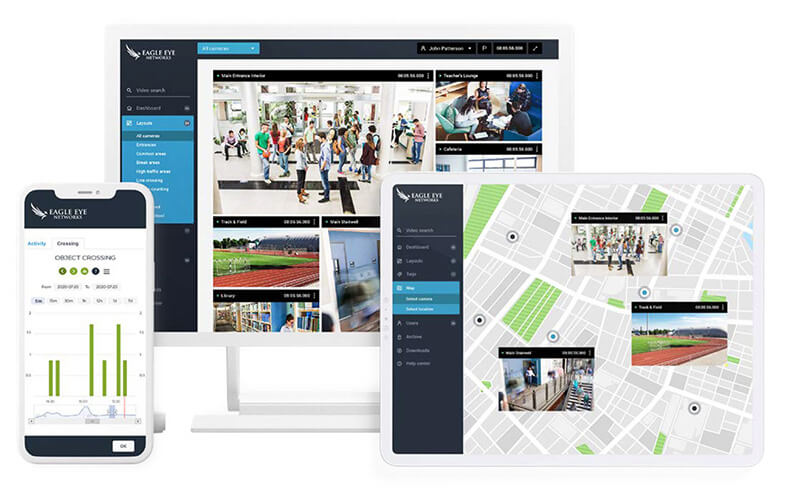
Comparison of Features and Capabilities
When comparing facial recognition software, several factors should be considered, including:
- Accuracy and Performance: Assess the accuracy and performance of the facial recognition algorithms, including their ability to detect and match faces accurately across different conditions, such as varying lighting, angles, and facial expressions.
- Scalability and Integration: Evaluate the scalability and integration capabilities of the software, including its ability to handle large volumes of facial data and integrate with existing systems and workflows seamlessly.
- Security and Privacy: Consider the security and privacy features of the software, including encryption, access control, and compliance with data protection regulations such as GDPR and CCPA.
- Customization and Flexibility: Determine the level of customization and flexibility offered by the software, including the ability to tailor algorithms, features, and workflows to specific use cases and requirements.
Considerations for Implementation
When implementing facial recognition software, several considerations should be taken into account, including:
- Use Case and Requirements: Clearly define the use case and requirements for facial recognition, including the specific tasks, objectives, and constraints the software needs to address.
- Data Collection and Training: Ensure proper data collection and training of facial recognition models, including using diverse and representative datasets to minimize biases and improve accuracy.
- User Experience and Accessibility: Consider the user experience and accessibility of the facial recognition system, including ease of use, reliability, and inclusivity for users with diverse backgrounds and abilities.
- Ethical and Legal Compliance: Address ethical and legal considerations related to facial recognition, including privacy, consent, transparency, and accountability in data collection, storage, and usage.
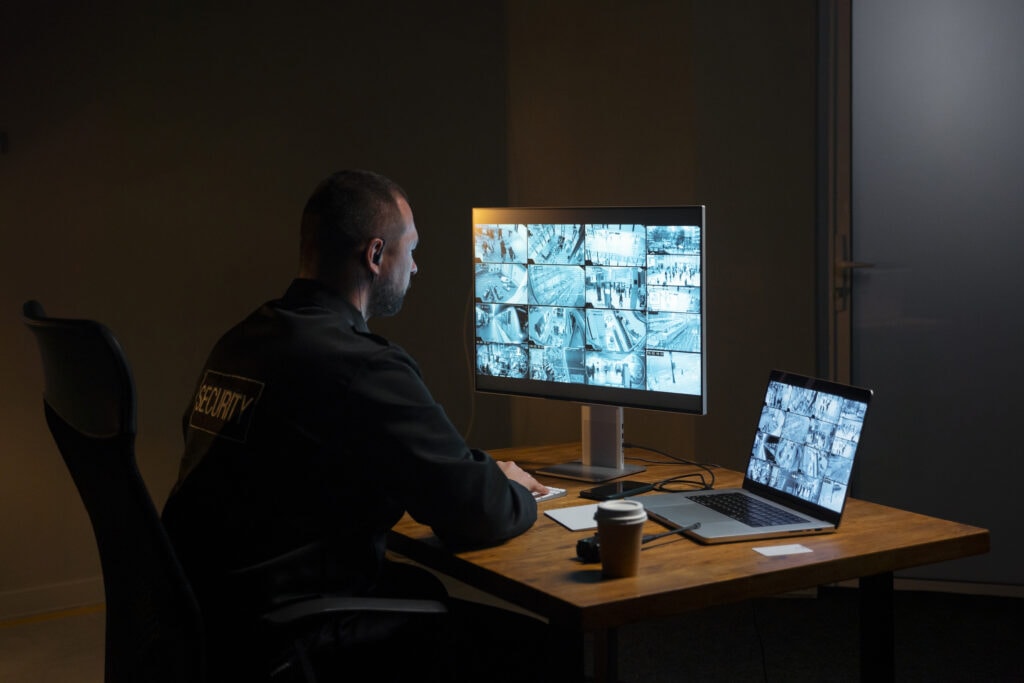
Selecting and implementing facial recognition software requires careful consideration of the leading technologies, their features, and considerations for implementation to ensure successful deployment and compliance with ethical and legal standards.
Artificial Intelligence and Facial Recognition
The integration of artificial intelligence (AI) in facial recognition has revolutionized the capabilities and performance of facial recognition systems, enabling advanced features and improved accuracy. Understanding the role of Artificial Intelligence, machine learning algorithms, and future developments is crucial in exploring the potential of facial recognition technology.

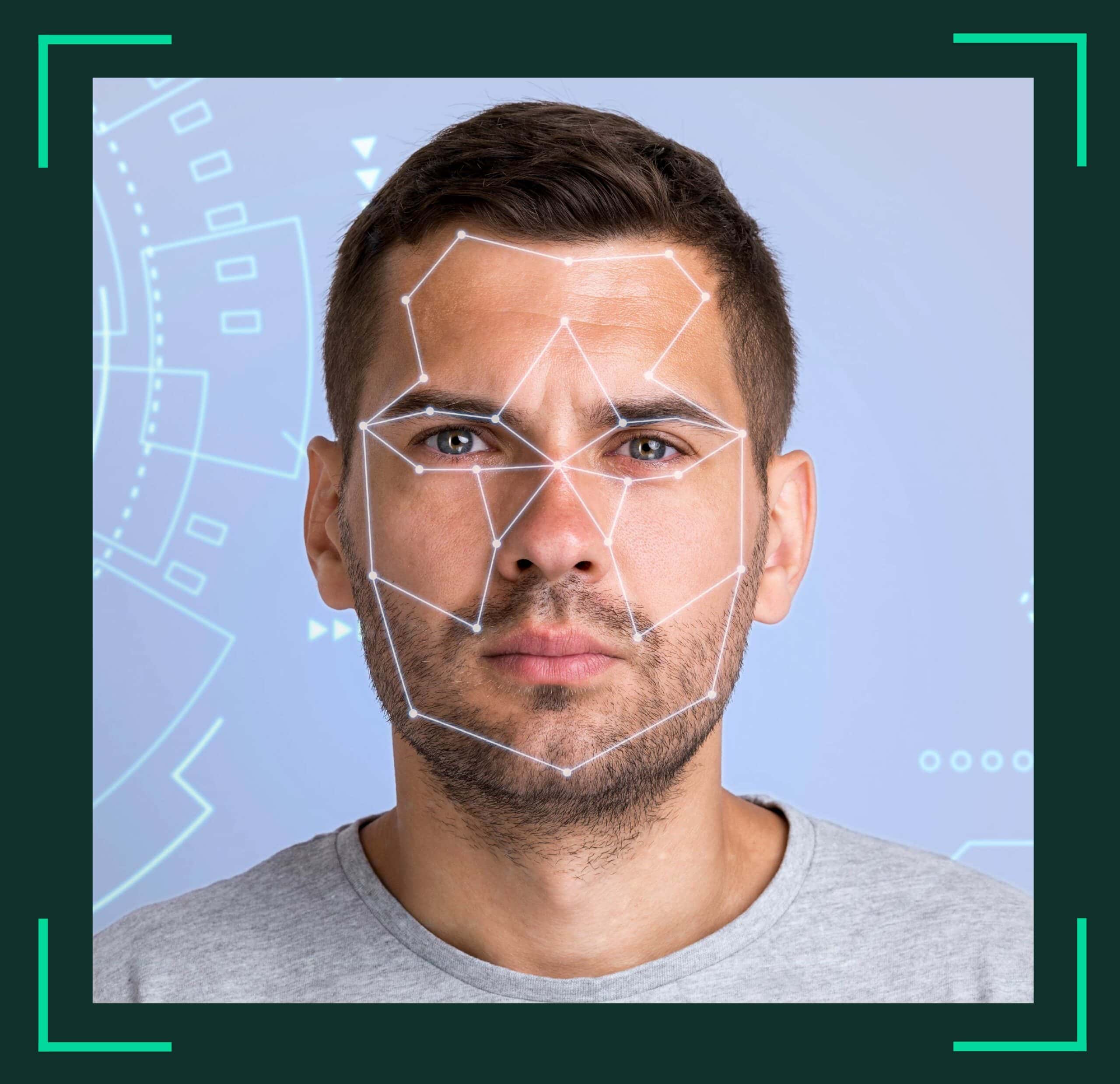
Integration of Artificial Intelligence in Facial Recognition
AI plays a central role in facial recognition by powering advanced algorithms that analyze, interpret, and recognize facial features with human-like accuracy. AI techniques such as machine learning, deep learning, and neural networks enable facial recognition systems to learn from data, adapt to different environments, and continuously improve performance. The integration of AI allows facial recognition systems to handle complex tasks such as face detection, identification, verification, and analysis of facial attributes with high precision and efficiency.
Machine Learning Algorithms
Machine learning algorithms form the backbone of AI-powered facial recognition systems, providing the ability to learn patterns and make predictions from large datasets of facial images. Some of the key machine-learning algorithms used in facial recognition include:
CNNs are a class of deep learning algorithms specifically designed for image recognition tasks. They consist of multiple layers of convolutional and pooling operations that learn hierarchical representations of facial features from raw pixel data, enabling highly accurate face detection and recognition.
SVMs are a class of supervised learning algorithms used for classification tasks. In facial recognition, SVMs are often employed to classify faces into different categories or to distinguish between known and unknown faces based on learned features extracted from facial images.
PCA is a dimensionality reduction technique that transforms high-dimensional data into a lower-dimensional space while preserving the most important features. In facial recognition, PCA extracts discriminative facial features and reduces the computational complexity of matching faces against a database.
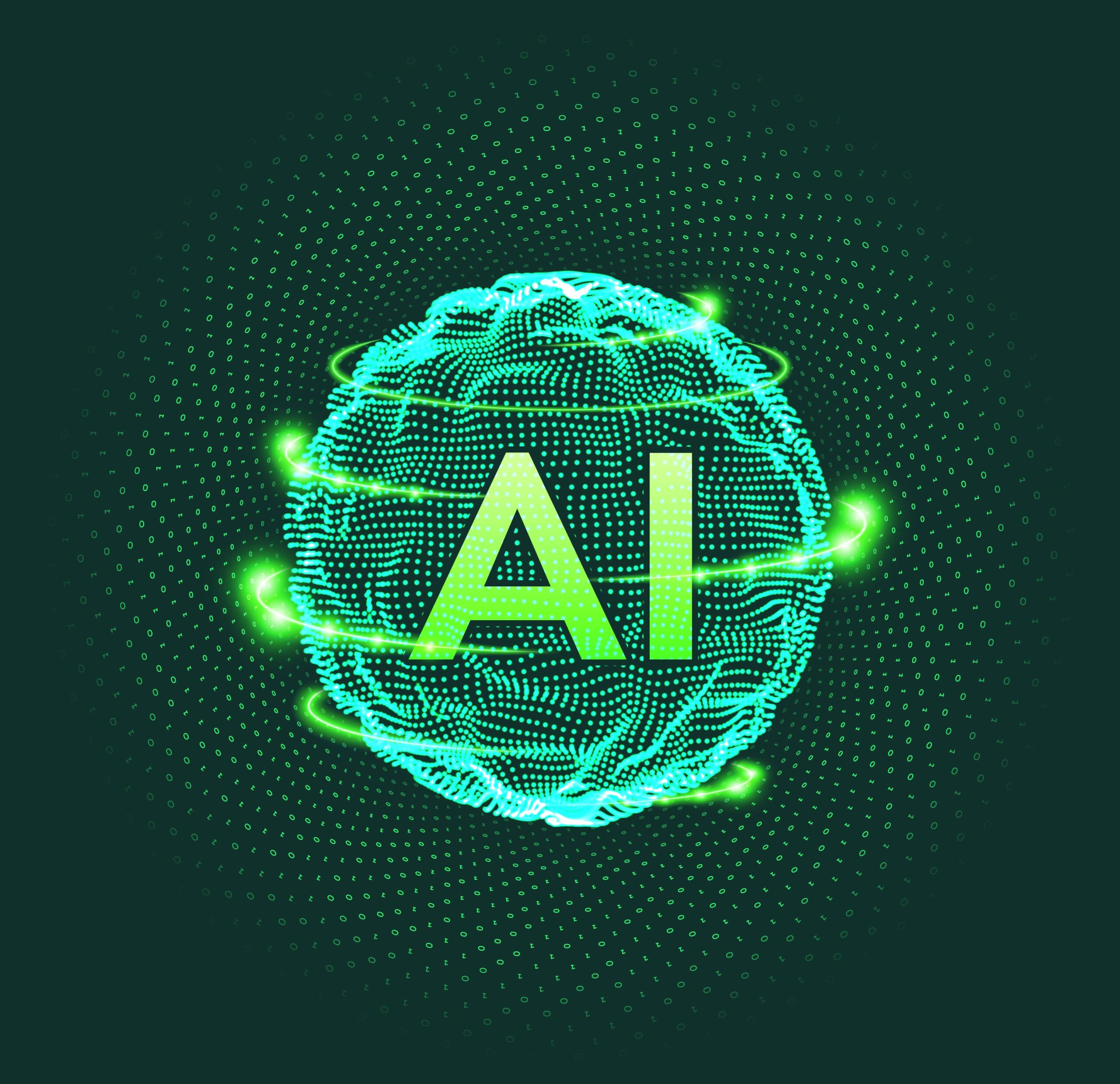
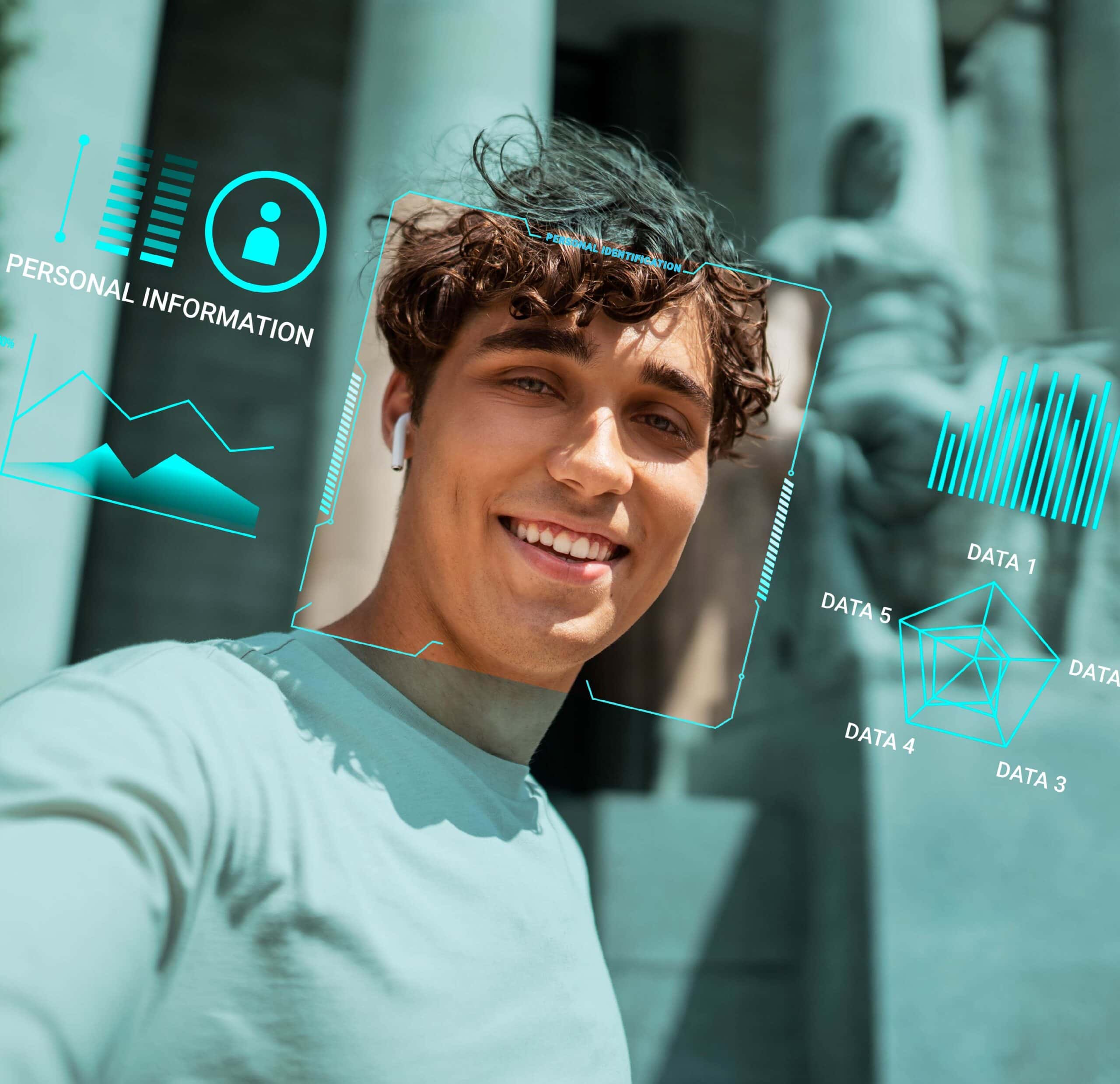
Future Developments and Trends
AI, machine learning, and computer vision advancements drive facial recognition technology’s future. Some emerging developments and trends in AI-powered facial recognition include:
Continued research and development efforts aim to enhance the accuracy and robustness of facial recognition systems, particularly in challenging conditions such as low lighting, occlusions, and variations in facial expressions.
There is growing recognition of the ethical and societal implications of facial recognition technology, leading to efforts to develop responsible AI practices and guidelines that prioritize privacy, fairness, transparency, and accountability in facial recognition systems.
Future facial recognition systems may integrate multimodal biometric modalities, such as voice recognition, iris scanning, and fingerprint recognition, to enhance security and authentication accuracy while minimizing the risk of spoofing or impersonation attacks.
Edge computing and privacy-preserving techniques enable facial recognition processing to be performed locally on devices or at the network edge, reducing the need for transmitting sensitive facial data to centralized servers and enhancing privacy and data security.
The integration of artificial intelligence (AI) in facial recognition has revolutionized the capabilities and performance of facial recognition systems, enabling advanced features and improved accuracy. Understanding the role of Artificial Intelligence, machine learning algorithms, and future developments is crucial in exploring the potential of facial recognition technology.

Biometric Facial Recognition
Biometric facial recognition is a sophisticated technology that relies on unique physical characteristics of individuals’ faces to identify or verify their identity. Understanding the principles of biometrics, the distinction between identification and verification, and its adoption across different sectors is essential for comprehending its significance and applications.
Understanding Biometrics
Biometrics measures and analyzes individuals’ unique physical or behavioral characteristics for identification or verification. These characteristics include fingerprints, iris patterns, voice prints, and facial features. Biometric identification relies on the distinctiveness and permanence of these characteristics to establish an individual’s identity accurately and reliably.
Biometric Identification vs. Verification
Biometric identification involves determining an individual’s identity by comparing their biometric data against a database of known identities. This is typically done by searching the database for a match and returning the identity associated with the closest match to the input biometric data. Biometric verification, conversely, involves confirming whether an individual’s biometric data matches the identity claimed by the individual. This is achieved by comparing the input biometric data against a single reference template associated with the claimed identity.
Adoption in Various Sectors
Biometric facial recognition technology has been adopted across various sectors for a wide range of applications, including:
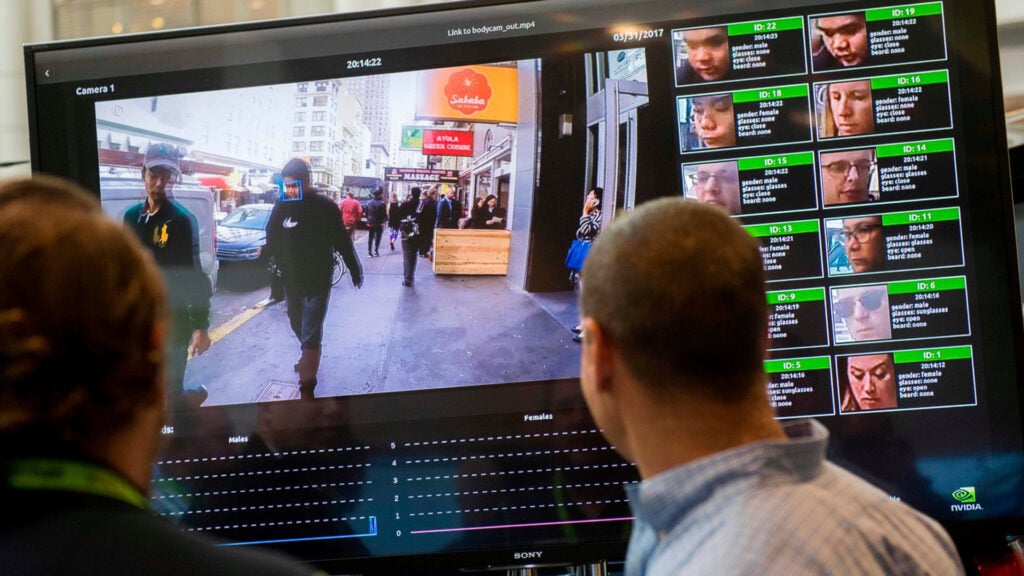
Security and Law Enforcement
Facial recognition is extensively used in security and law enforcement for surveillance, access control, and criminal identification purposes. It enables authorities to monitor public spaces, identify suspects, and prevent unauthorized access to secure facilities.
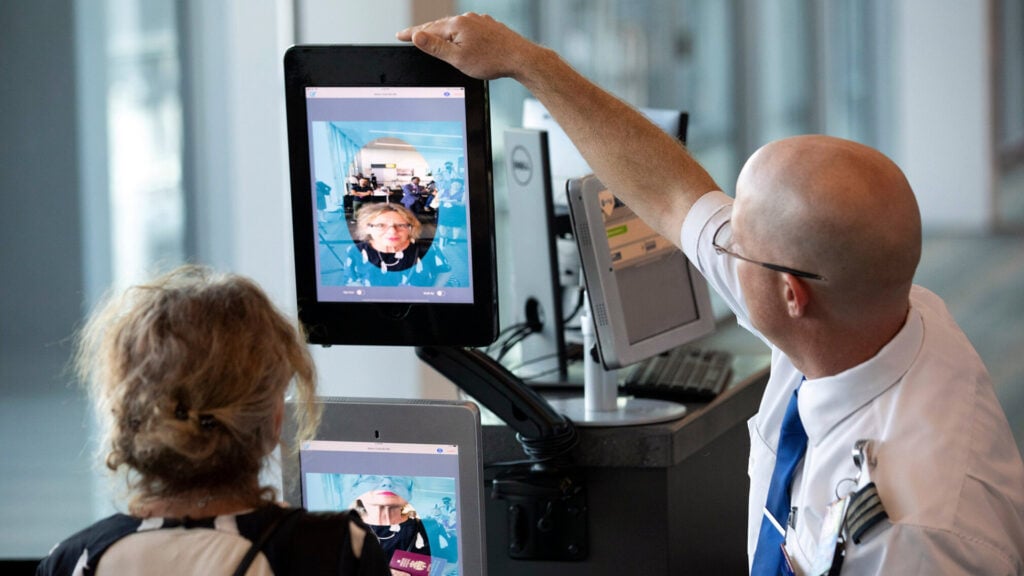
Border Control and Immigration
Biometric facial recognition is employed in border control and immigration processes for identity verification and traveler screening. It helps border authorities process travelers efficiently, detect individuals on watchlists, and enhance border security.

Personal Device Authentication
Many smartphones, tablets, and laptops incorporate biometric facial recognition as a convenient and secure authentication method. Users can unlock their devices, authorize transactions, and access sensitive information by scanning their faces.
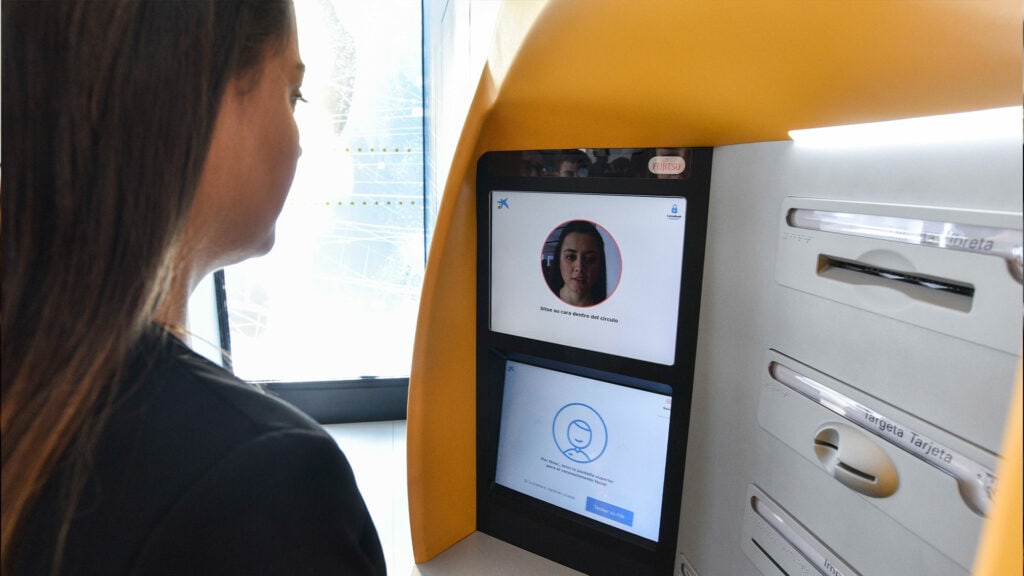
Banking and Financial Services
Biometric facial recognition is increasingly used in banking and financial services for customer authentication, fraud prevention, and identity verification. It enables secure and seamless access to online banking platforms and facilitates secure transactions.
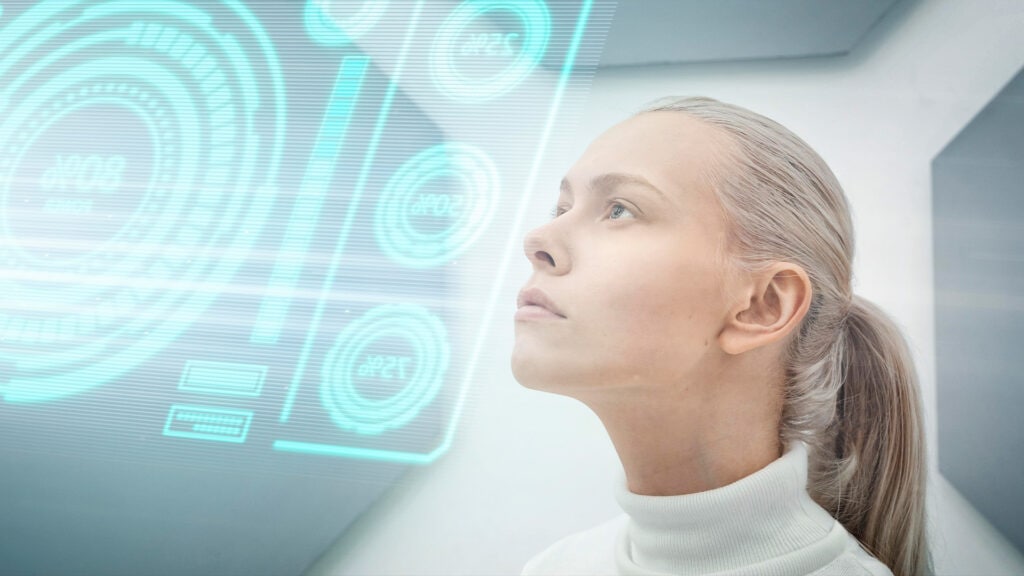
Healthcare and Biometrics
Biometric facial recognition is being explored in healthcare for patient identification, access control, and authentication. It offers potential benefits in improving patient safety, reducing medical errors, and enhancing data security in healthcare settings.
Face Identification vs. Face Verification
In facial recognition technology, two fundamental processes are face identification and face verification. Understanding the distinctions between these processes, their respective use cases, and their significance in security systems is crucial for comprehending their roles and applications.
Distinguishing Between the Face Identification and Face Verification

Face Identification
Face identification, also known as face recognition, involves determining an individual’s identity by comparing facial features against a database of known faces. The system searches the entire database to find the closest match to the input facial features, identifying the individual even if their identity is unknown.

Face Verification
Face verification, on the other hand, focuses on confirming whether an individual’s facial features match a specific identity claimed by the individual. Instead of searching the entire database, the system compares the input facial features against a single reference template associated with the claimed identity. If the features sufficiently match the reference template, the identity is verified.
Use Cases and Applications of Face Identification and Face Verification
Face Identification
- Law Enforcement: Face identification is widely used in law enforcement for identifying suspects, missing persons, and persons of interest from surveillance footage or databases of known individuals.
- Access Control: In access control systems, face identification enables recognition of authorized individuals and prevents unauthorized access to secure facilities or restricted areas.
Face Verification
- Personal Device Authentication: Face verification is commonly used in personal devices such as smartphones and laptops for user authentication. It allows users to unlock their devices and access sensitive information securely.
- Financial Transactions: In banking and financial services, face verification is employed for secure authentication of transactions and account access, reducing the risk of fraud and unauthorized access.
Importance in Security Systems
In facial recognition technology, two fundamental processes are face identification and face verification. Understanding the distinctions between these processes, their respective use cases, and their significance in security systems is crucial for comprehending their roles and applications.
Face Identification
Face identification provides a proactive approach to security by enabling the identification of individuals of interest or those who pose a potential threat. It allows security personnel to quickly identify suspects or unauthorized individuals within a large crowd or surveillance footage, facilitating timely intervention and response.
Face Verification
Face verification provides a reactive approach to security by verifying the identity of individuals seeking access to secure facilities or sensitive information. It ensures that only authorized individuals are granted access, preventing unauthorized entry and protecting sensitive assets or information from breaches.
Face identification and face verification are integral components of facial recognition technology, each serving distinct purposes and applications in security systems. By understanding their differences and capabilities, organizations can effectively leverage these processes to enhance security measures and safeguard against potential threats and breaches.
Limitations and Challenges
While facial recognition technology offers numerous benefits, it also faces various limitations and challenges that can impact its effectiveness and reliability. Understanding these limitations and challenges is essential for developing strategies to overcome obstacles and improve the performance of facial recognition systems.

Environmental Factors
Environmental factors such as lighting conditions, camera angles, and occlusions can significantly impact the performance of facial recognition technology. Poor lighting conditions, for example, can obscure facial features and reduce the accuracy of face detection and recognition algorithms. Similarly, variations in camera angles or obstructions such as hats, glasses, or facial hair can affect the system’s ability to identify or verify individuals accurately. Adverse environmental conditions pose significant challenges for facial recognition systems deployed in real-world settings, particularly outdoor environments or areas with dynamic lighting conditions.
Accuracy and Reliability
Despite advancements in facial recognition technology, issues related to accuracy and reliability persist. Facial recognition systems may exhibit biases or inaccuracies, particularly when dealing with diverse populations or demographic groups. Factors such as age, gender, ethnicity, and expression can influence the performance of facial recognition algorithms, leading to false positives or negatives. Additionally, image quality, resolution, and pose variations can impact the system’s ability to match facial features against a database of known faces accurately. Achieving high levels of accuracy and reliability remains a significant challenge for facial recognition technology, especially in real-world applications with diverse and dynamic environments.

Overcoming Obstacles
To address the limitations and challenges of facial recognition technology, several strategies can be employed:
Robust Algorithm Development
Continued research and development efforts are needed to improve the robustness and adaptability of facial recognition algorithms. This includes developing algorithms that can effectively handle variations in lighting, pose, expression, and environmental conditions, enhancing accuracy and reliability.
Data Quality and Diversity
Ensuring high-quality and diverse training data is essential for improving the performance of facial recognition systems. Training datasets should include facial images representing diverse demographics, expressions, poses, and environmental conditions to minimize biases and improve generalization.
Ethical and Responsible Deployment
Ethical considerations and responsible deployment practices are essential for mitigating facial recognition technology’s potential risks and harms. This includes implementing privacy-enhancing measures, obtaining informed consent, and establishing transparent and accountable governance frameworks to ensure facial recognition systems’ ethical and responsible use.
Interdisciplinary Collaboration
Collaboration between experts from diverse fields, such as computer vision, machine learning, psychology, and ethics, is essential for addressing the multidimensional challenges of facial recognition technology. Interdisciplinary approaches can foster innovation, identify potential biases or limitations, and develop holistic solutions considering technical, ethical, and societal perspectives.
While facial recognition technology holds great promise, it also faces significant limitations and challenges that must be addressed to realize its full potential. By understanding and addressing these obstacles, researchers, developers, policymakers, and stakeholders can work together to overcome challenges and advance the development and deployment of facial recognition systems responsibly and ethically.
Future Outlook of Facial Recognition Technology
The future of facial recognition technology holds promise for significant advancements, with potential applications across various industries. However, addressing ethical concerns and ensuring responsible deployment will be crucial in shaping the trajectory of facial recognition technology.
Advancements in Technology

Improved Accuracy and Performance
Continued advancements in artificial intelligence, machine learning, and computer vision are expected to improve facial recognition systems’ accuracy and performance. Enhanced algorithms capable of handling diverse environmental conditions, variations in facial expressions, and demographic factors will contribute to more reliable and robust facial recognition capabilities.

Multimodal Biometrics Integration
Integrating facial recognition with other biometric modalities such as voice recognition, iris scanning, and fingerprint recognition will enhance multimodal biometric systems’ accuracy and security. Combining multiple biometric identifiers will strengthen authentication processes and minimize the risk of spoofing or impersonation attacks.
Potential Applications in Different Industries
Healthcare
Facial recognition technology has the potential to revolutionize healthcare by facilitating patient identification, access control, and personalized care delivery. Applications include patient authentication, medical record management, and monitoring patient adherence to treatment plans.
Retail and Marketing
In the retail sector, facial recognition can analyze customer demographics, preferences, and behavior to personalize shopping experiences and optimize marketing strategies. Retailers can leverage facial recognition for customer engagement, targeted advertising, and inventory management.
Transportation
Facial recognition technology can enhance security and efficiency in transportation systems by enabling biometric authentication for passenger boarding, ticketing, and access control. Airlines, airports, and public transit agencies can utilize facial recognition for streamlined passenger processing and improved passenger experience.
Addressing Ethical Concerns
Privacy Protection
Efforts to protect individual privacy rights and mitigate the risks of surveillance and data misuse will be essential in the future development and deployment of facial recognition technology. Privacy-enhancing measures such as data anonymization, encryption, and user consent mechanisms will help safeguard sensitive facial biometric data.
Bias Mitigation
Addressing biases and disparities in facial recognition algorithms will ensure fairness, equity, and inclusivity. Developers must prioritize diversity and representativeness in training datasets, implement bias detection and mitigation techniques, and engage in transparent and accountable algorithmic decision-making processes.
Regulatory Frameworks
Robust regulatory frameworks and governance mechanisms are needed to establish clear guidelines and standards for the responsible use of facial recognition technology. Policymakers must collaborate with stakeholders to develop regulations that balance innovation and privacy, address ethical concerns, and promote transparency and accountability in facial recognition practices.
How Can Verifyfaces Help With Facial Recognition?
Verifyfaces can significantly aid facial recognition by providing a cost-effective security solution with enterprise-grade performance and features. Born out of the ambition to circumvent the exorbitant expenses linked to proprietary hardware and specialized IT support, Verifyfaces offers a streamlined approach to facial recognition technology. By leveraging Verifyfaces, businesses can implement robust facial recognition capabilities without the financial burden typically associated with such systems. This democratization of facial recognition empowers organizations of all sizes to enhance their security measures efficiently and affordably, ensuring seamless integration and reliable performance without compromising quality.
Frequently Asked Questions (FAQs)
Facial recognition technology analyzes unique facial features, such as the size and shape of the eyes, nose, and mouth. These features are captured from images or videos and then converted into numerical data using algorithms. This data is compared against a database of known faces to identify or verify individuals.
Facial recognition technology analyzes unique facial features, such as the size and shape of the eyes, nose, and mouth. These features are captured from images or videos and then converted into numerical data using algorithms. This data is compared against a database of known faces to identify or verify individuals.
The main applications of facial recognition include security and surveillance, access control systems, law enforcement, border control, personal device authentication, payment verification, marketing and retail analytics, and healthcare.
Facial recognition software can vary in accuracy depending on factors such as the quality of the images, lighting conditions, and algorithmic capabilities. While advancements have improved accuracy, challenges such as biases and variations in facial appearances can impact overall accuracy.
Privacy concerns associated with facial recognition include collecting and storing sensitive biometric data, the potential for mass surveillance and tracking, the risk of unauthorized access to facial data, and the lack of transparency and consent in facial recognition practices.
Facial recognition technology can be fooled or tricked through methods such as wearing disguises, using makeup or accessories to alter facial features, or exploiting vulnerabilities in the algorithm. However, technological advancements aim to mitigate these vulnerabilities and improve the resilience of facial recognition systems.
Facial recognition technology impacts society in various ways, including enhancing security measures, improving convenience in personal devices and authentication systems, raising concerns about privacy and civil liberties, and exacerbating biases and inequalities in algorithmic decision-making.
Facial recognition technology impacts society in various ways, including enhancing security measures, improving convenience in personal devices and authentication systems, raising concerns about privacy and civil liberties, and exacerbating biases and inequalities in algorithmic decision-making.
Regulations governing the use of facial recognition vary by jurisdiction but may include data protection laws, privacy regulations, and guidelines for ethical and responsible AI development. Some countries and regions have implemented specific laws or regulations addressing facial recognition technology and its use in public and private sectors.
Facial recognition differs from other biometric technologies, such as fingerprint recognition, iris scanning, and voice recognition, in that it relies on unique facial features for identification or verification. Each biometric technology has advantages, limitations, and applications depending on accuracy, convenience, and security requirements.
Yes, facial recognition algorithms can exhibit biases due to factors such as the demographic makeup of the training data, variations in facial appearances, and algorithmic limitations. Biases can result in disparities in accuracy and performance across different demographic groups, raising concerns about fairness and equity in facial recognition systems.
Businesses can leverage facial recognition technology for various purposes, including customer authentication, access control, personalized marketing, security and surveillance, and data analytics. By integrating facial recognition into their systems and processes, businesses can enhance security measures, improve operational efficiency, and deliver personalized experiences to customers.